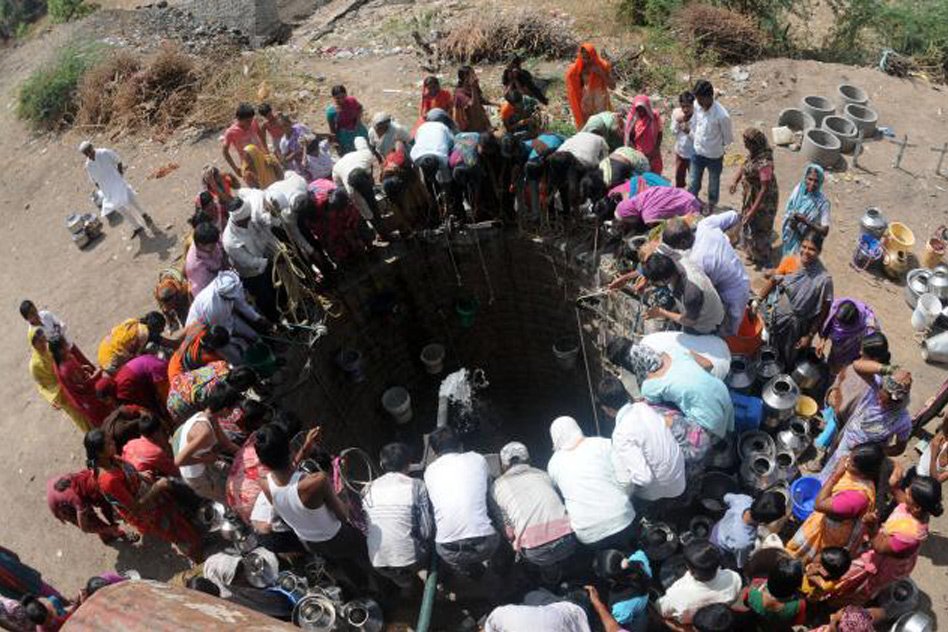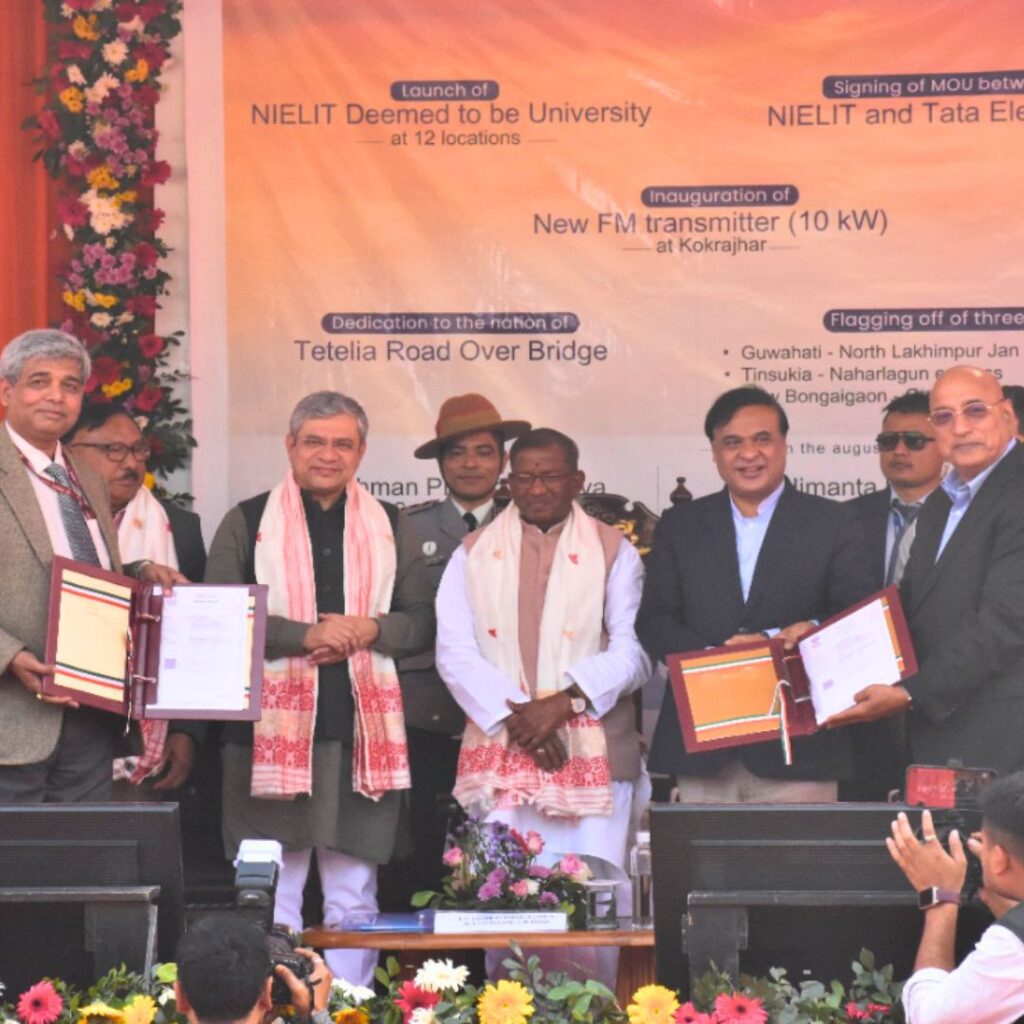Image source: purewatergazette
During a crisis, the basic amenities as water and food reach an alarming level of shortage, deficit and even depletion. However, it is shocking to discern that even during normalcy, most parts of our country are under the daily threat of water scarcity. Such a state does not transpire overnight as decades of unawareness, laxity in irrigation, unchecked industrialization, and per capita rise in demand of water leads to hazardous depletion of ground water. The pertinent question is not only about the unavailability of water but the lack of clean drinking water as well- depletion as well as contamination. Water scarcity is triggered either when the natural resources do not suffice to meet the population demand or when the mismanagement of water resources drains and deteriorates water supply. It is also to be considered that in some regions where water is not accessible, the affected people have to travel long distances to reach an adequate and clean water resource. In a report delivered by National Sample Survey Office, it has been found that women folk are the most affected by the detrimental issue of water scarcity. Women belonging to rural areas are forced to walk long distances to meet the water demand on a daily basis as water resources are either inaccessible or unclean in their vicinity or adjoining areas. But as the ground water is distressed with contamination and depletion, the women and the rural public at large are facing a threat which needs immediate intervention and combative strategies to eliminate water scarcity.
Water is a basic necessity; it is shocking that when luxury can be bought, clean drinking water seems hard to reach. Water crisis, is it imminent, can it happen, will it happen? These questions have an absolute answer that Water crisis is already here in India and if the matter is not stringently considered, it will be beyond anyone’s control.
Causes of Water Scarcity: Use and Abuse
India needs to effectively allocate and distribute water to meet the rising demand of irrigation, industrial set-ups, and the general public. It will require a scrutinized use and reuse of water resources to an optimum level of vision and management. Water resources in India face overuse as well as rampant commodification which unequivocally leads to an acute water crisis. With population increasing at a staggering rate, the demand of water is bound to rise. Also considering the erratic climate change which affects the rainfalls, the strain on water resources is significantly amplified. India is a reservoir of rivers as the Ganges, Brahmaputra, Godavari, Krishna, Narmada, and etc. yet it is afflicted with water shortage. This exposes the first and foremost cause of water crisis in India which is the gross human error. This human factor of negligence and unawareness can be evidenced in the following perpetrators of Water scarcity in India as: (a) Gross management of water resources; (b) Lack of implementation of laws; (c) Dilapidated storage infrastructure; (d) Industrialization and resulting pollutants in drinking water, (e) Unchecked agricultural processes as over-pumping of ground water; (f) Lack of awareness on Water conservation and Recycling.
India needs to formulate an effective legislation on water use, which can serve as a valuable method to scrutinize the overdrawing of ground water, unrestricted boring of tube wells, electric pumps etc. Article 21 of the constitution states that every citizen has a right to safe drinking water, but many a times it has been loopholed and this legal right is taken advantage of. How many wells to be dug for clean water, how much usage for a person and for an industry, all these question address the fact that there is no system of checks and balances in the supply and demand of water in India. There has to be a balanced supply to the demand of water, and the supply needs to be checked to ensure the water use is not abused for ulterior profits or out of lack of accountability. If this not guaranteed, the rural people as are the current state of affairs will be at the receiving end of water scarcity while the urban areas will continue to put up with unclean drinking water. There should be a logical stance taken on water use; the supply and demand of water should be adequately allocated so that one institution does not exploit the resources to create water crisis for another.
It is true that ground water resources are somewhat ubiquitous however the emergency arises when it is realised that these resources are not being replenished as per the rate of their consumption. The over-drawing of ground water is not managed by the rate of renewing the same for long term usage. The myopic management of water resources has lead to contamination of ground water, its endangerment, and reduction in natural springs so on. It is not only the overuse or abuse of ground water but the damaging effect of pollution on it which makes it inconsumable and a breeding reservoir of water-borne diseases.
Global warming has undoubtedly affected the climate of India and has led to an intermittent distribution of rainfall. However, despite knowing this reality of climate woes, the government has failed to capitalize on storing rainfall with an adequate infrastructure. The wells or tanks which are installed in areas hit with water scarcity are found to be in poor condition. They are not repaired and are generally built with the cheap material that causes leakages and crumbling which fails to ensure water security. Rain water harvesting and proper storage needs to be highlighted and implemented for better water usage. The public also needs to be sensitized to consider water as a scarce recourse as opposed to the misconception that water is in abundance. It is also to be highlighted that water misuse can be an agent of health concerns, as the grave link between water contamination and disease is a field which the public is yet to be sensitised about.
Combating Water Crisis: Problems and Solutions
If Water Scarcity is a crisis, then this problem also has a solution which can address the use and abuse of water in India. It is about time, the government, private sector and the public take a take a leaf from the innovative strategies invented in areas afflicted with water scarcity. Doing so will herald a positive and constructive approach in managing water crisis in India. Once it is acknowledged that water as a natural resource is limited in quantity and invariably affects the economic progress, social welfare, public health and ecological equilibrium of a nation, the urgency to replenish this resource would not be sidelined but put on the forefront.
Broadly speaking, water management should follow a two-tier approach. It can be classified as:
Pre-emptive strike or Preventive Measures
It is highly advisable to prevent contamination of water than treating a water resource for pollutants. Such a step is cost-effective and dispels the harmful diseases from upsetting normalcy. Certainly this approach requires concerted effort on mapping the affected areas, resolving the problems in advance and also it need to be done to the last letter. Holistic vision, pragmatic planning and sustainable action should be taken into consideration together than separately for a concerted implementation and result.
Collaboration
When strategies and guidelines are devised for water management, it is pertinent to collaborate with other zones such as industrial and/or human waste management. The contamination of water can be checked by the inspection of wastes dumped into water bodies as lakes and rivers and if the two sectors collaborate, both will work more efficiently together than alone. The basis of such collaboration would ensure that intensive steps are taken by both the sides to apprehend the issue. Not only this, the private sector should be encouraged to work with the public sector for rectifying water crisis.
In discussing the broad approach towards an effective water management, the pioneering steps towards conservation, decontamination and replenishment of water can be put as follows:
Rainfall-Independent Strategies
- Recycle: The public contention with recycled water is the misconception that it is not clean. The waste water which is treated for re-consumption is hence not welcomed by the public. Once this popular myth is debunked, recycled water can serve as a best option to resolve water crisis.
- Desalination: It is a process which removes minerals from salt water to make it consumable. Though it is not dependent on rainfall, it draws censure due to its high costs, and energy consumption. But in areas where methods such as rainfall storage etc are not feasible, desalination is a water saver.
- The Integrated Biotectural System or IBTS: It is a solar-powered desalination which does not pollute the environment; it is not reliant on fossil fuels, is powered by solar and wind energy and is efficient than the common desalination plants.
- Import Water: Water can be imported from areas where this natural resource is found in abundance.
Augment Agricultural practices
It is imperative to inform farming with relevant questions on as how much water is needed, how much is being wasted, and to acclimatize and equip the farmers with water-efficient technology. Monitoring of ground water is to be considered and practices as establishing farm ponds which collect wasted water, tanks and wells should be kept in mind to collect rain water etc. The demand and supply needs to be scrutinized than allowed to be exploited due to unawareness or slackness.
Water should come with a price tag?
Water as goes the adage is ‘everywhere’ and its abundance is mostly publicised. But the punch line of the same saying which is-‘not a drop to drink’ is not given due consideration. This mentality needs to change if water management is to be given serious importance. The debate on putting a price on water usage is to ensure balanced usage of water; usage which comes with responsibility and a penalty if water is wasted etc.
Count Water footprints
It is imperative to place industries under scrutiny and gauge their water footprints. The usage of water if exceeds the limits, adequate penalties should be enforced to deter any future negligence over the issue. It is also important to check if the industries do not dump their wastes into the natural resources without proper process of decontamination.
Putting Yourself in Charge
It will be a definite solution to water scarcity if people take it upon themselves to avoid wastage of water and sensitizing others on the dangers of water crisis. Leaking taps, wasting water on washing vehicles daily, excessive irrigation of home gardens, overflowing tanks, and many more areas should be checked for an effective water management in the home, community or colony. We as an individual and responsible citizen can tackle water deficit right in our backyard; the mentality needs to revisited and rectified. Along with this, open defecation should also be avoided. Municipal organizations should be forced to build toilets to prevent the same. One step at a time, the people as a community should break the myth of water in abundance and sensitise the masses on the ‘very much here’ crisis of water in India. Cut your own water footprint, and become an example for your neighbours, relatives and the country to follow. It is about time.











